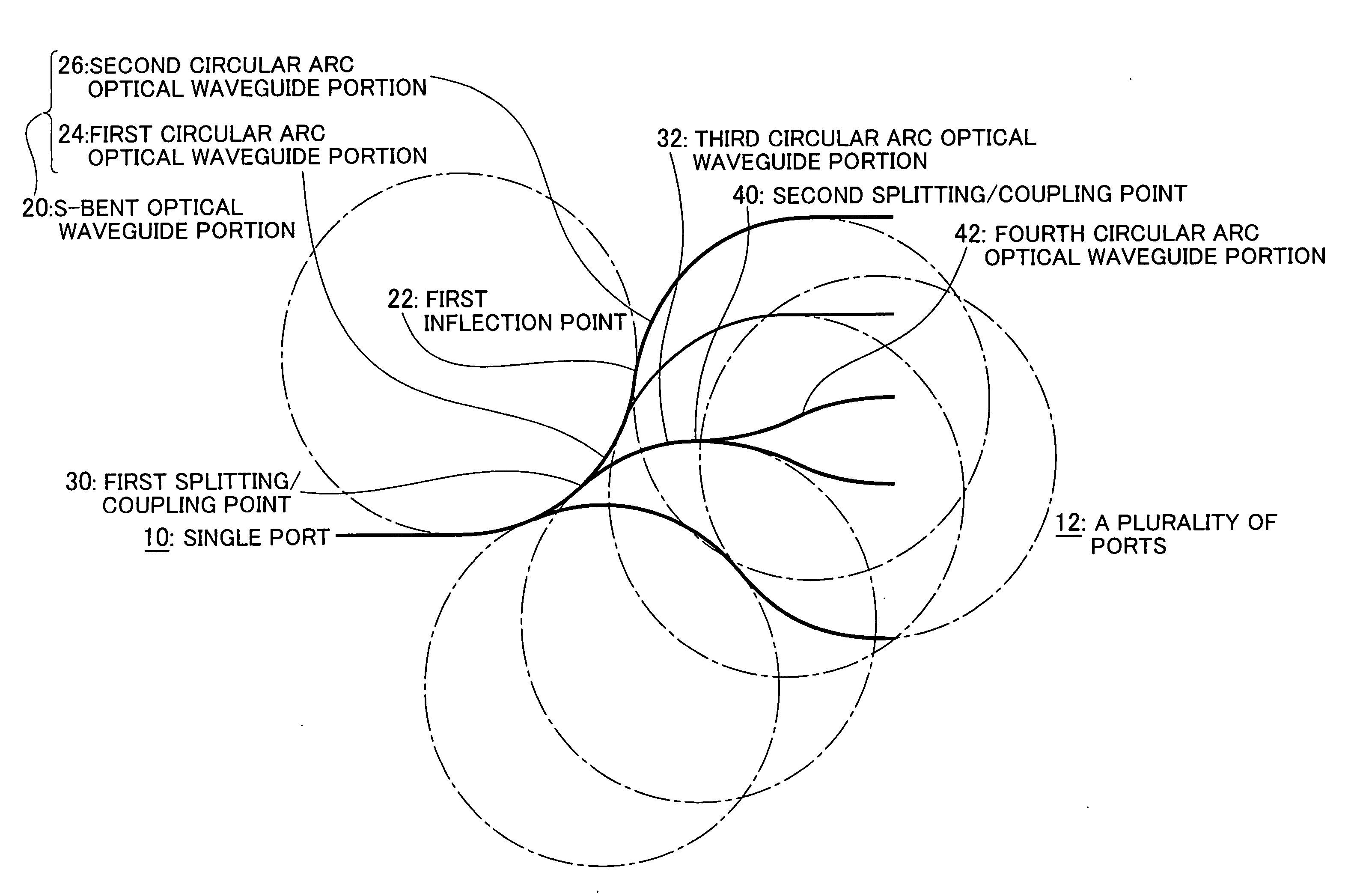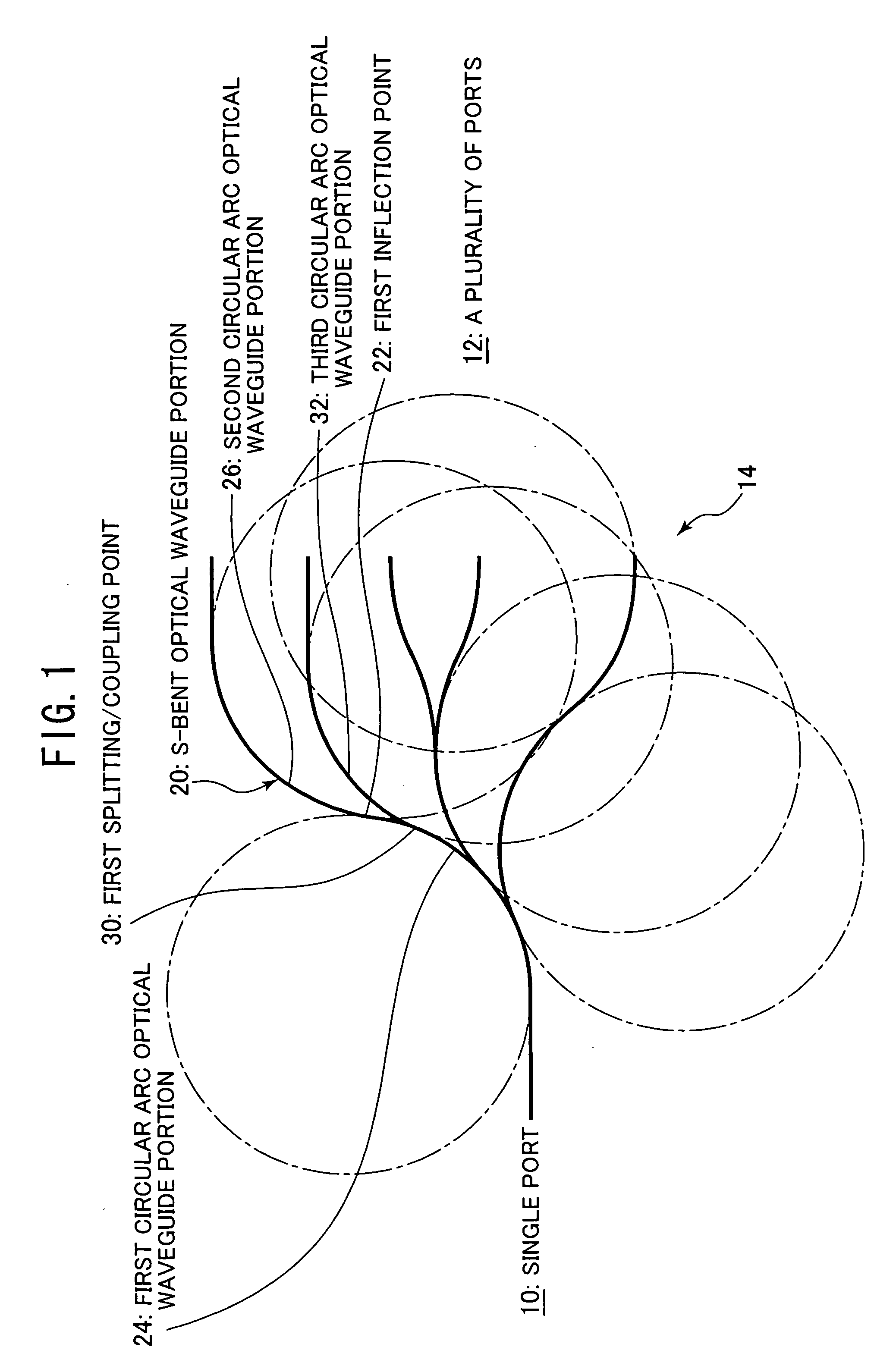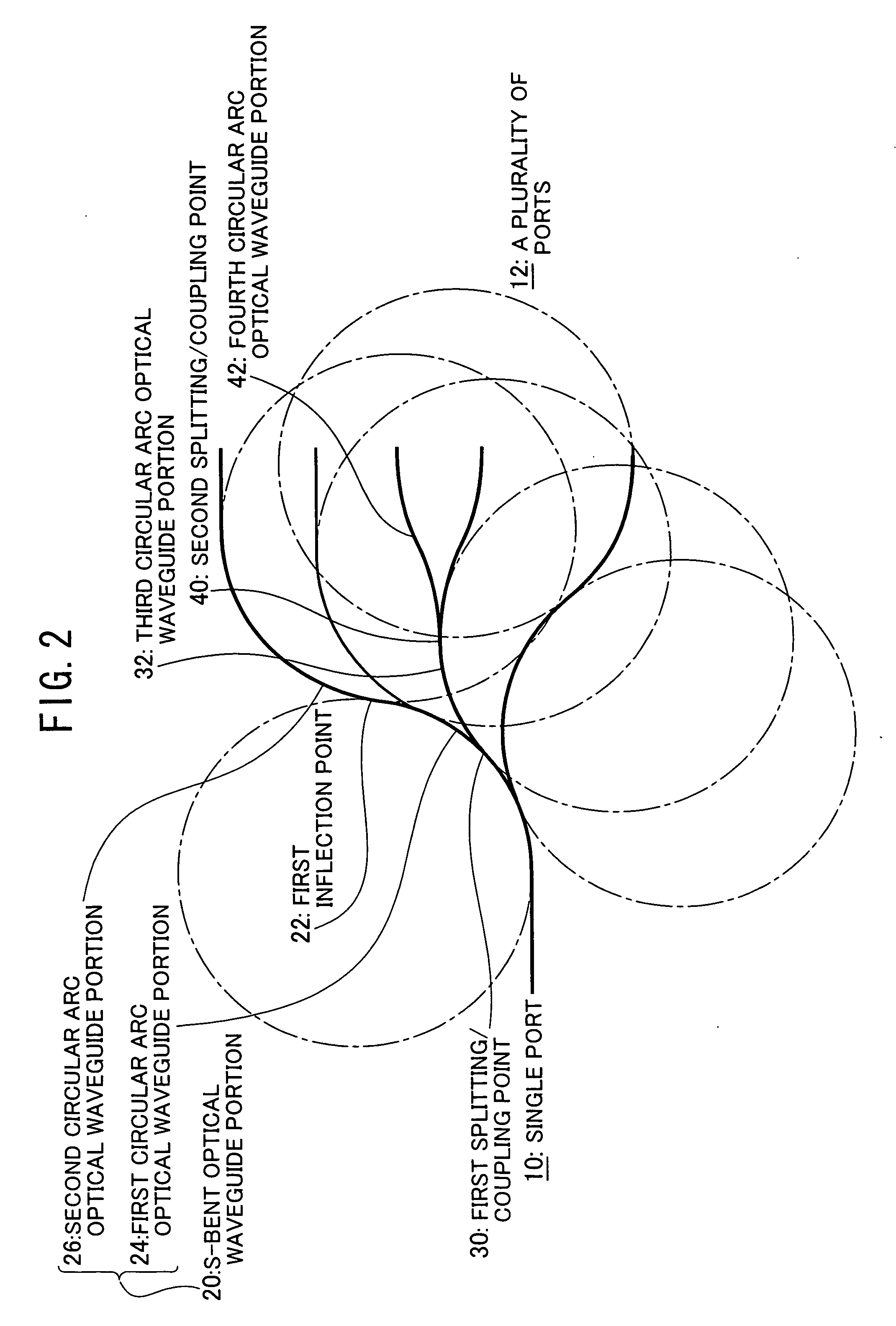Optical waveguide structure
- Summary
- Abstract
- Description
- Claims
- Application Information
AI Technical Summary
Benefits of technology
Problems solved by technology
Method used
Image
Examples
first embodiment
[0077] As shown FIG. 1, an optical waveguide structure of a first embodiment of the present invention is an optical waveguide structure 14 having a single port 10 on one input / output side and a plurality of ports 12 on the other input / output side comprising an S-bent optical waveguide portion 20 arranged on the outermost side of the waveguide structure, tangential lines at opposed ends of the S-bent optical waveguide portion 20 being parallel to each other, the S-bent optical waveguide portion 20 including a first circular arc optical waveguide portion 24 and a second circular arc optical waveguide portion 26 connected thereto at a first inflection point 22 where a curvature of the S-bent optical waveguide portion 20 is inverted, the first circular arc optical waveguide portion 24 having a first splitting / coupling point 30 located on a single-port side relative to the first inflection point 22; and a third circular arc optical waveguide portion 32 extending from the first splitting / ...
second embodiment
[0078] As shown in FIG. 2, in an optical waveguide structure of a second embodiment of the present invention, the third circular arc optical waveguide portion 32 has a second splitting / coupling point 40; and the waveguide structure further comprises a fourth circular arc optical waveguide portion 42 extending from the second splitting / coupling point 40 toward the plural-ports side 12 and having a curvature inverted relative to the third circular arc optical waveguide portion 32; wherein, at the second splitting / coupling point 40, a tangential line of the third circular arc optical waveguide portion 32 and a tangential line of the fourth circular arc optical waveguide portion 42 are parallel to and spaced from each other.
third embodiment
[0079] As shown in FIG. 3, in an optical waveguide structure of a third embodiment of the present invention, the fourth circular arc optical waveguide portion 42 has a third splitting / coupling point 50; and the waveguide structure further comprises a fifth circular arc optical waveguide portion 60 extending from the third splitting / coupling point 50 toward the plural-ports side 12 and having a curvature inverted relative to the fourth circular arc optical waveguide portion 42; wherein, at the third splitting / coupling point 50, a tangential line of the fourth circular arc optical waveguide portion 42 and a tangential line of the fifth circular arc optical waveguide portion 60 are parallel to and spaced from each other.
[0080] In these embodiments, (a) V-shaped groove(s) for connecting (an) optical fiber(s) to the waveguide may be provided on at least one of the single-port side and the plural-ports side. Providing the V-shaped groove facilitates mounting of an optical fiber to the wa...
PUM
 Login to View More
Login to View More Abstract
Description
Claims
Application Information
 Login to View More
Login to View More - R&D
- Intellectual Property
- Life Sciences
- Materials
- Tech Scout
- Unparalleled Data Quality
- Higher Quality Content
- 60% Fewer Hallucinations
Browse by: Latest US Patents, China's latest patents, Technical Efficacy Thesaurus, Application Domain, Technology Topic, Popular Technical Reports.
© 2025 PatSnap. All rights reserved.Legal|Privacy policy|Modern Slavery Act Transparency Statement|Sitemap|About US| Contact US: help@patsnap.com



